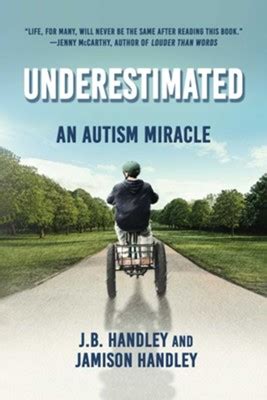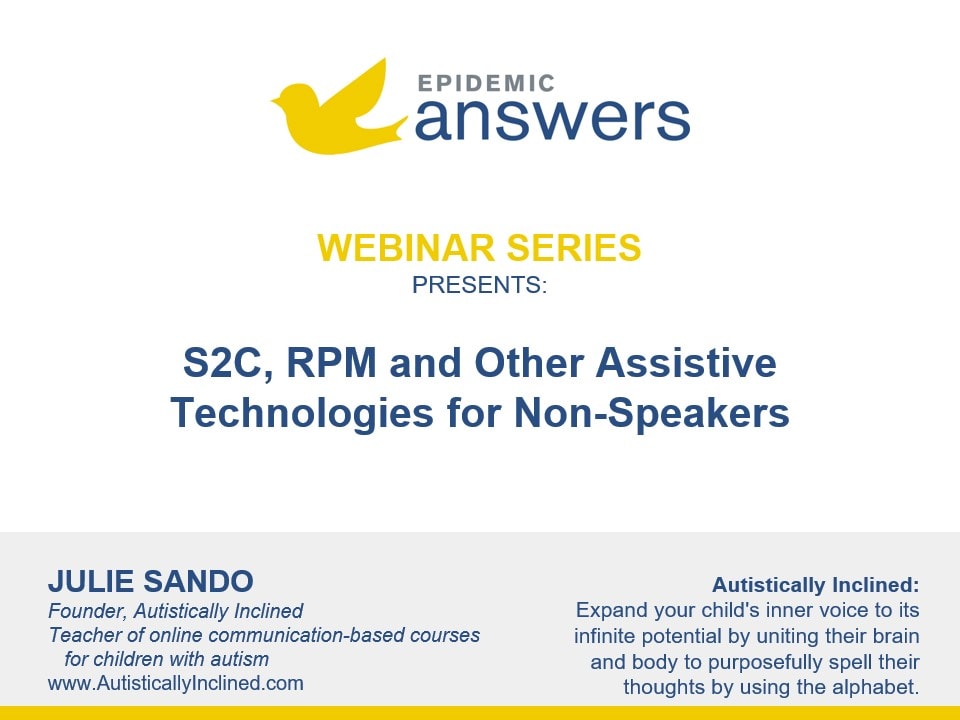The receptive language for some of these children is often intact and fully functioning; they understand everything that is being said. However, their motor planning for speech (the movements from brain to mouth) are impaired, similar to an adult that has a stroke and loses their ability to speak, which may be why HBOT can be so helpful for both.
By using gross-motor skills to point to letters on a letterboard, nonspeakers can learn to communicate. It is heartbreaking to know that children (and adults!) with autism sometimes have full cognition but have been trapped inside their bodies, unable to effectively communicate; “it’s an issue of ‘I can’t make my body do that'”. It’s no wonder that many of them have meltdowns. Wouldn’t you if you’re trying to make a point that another person just doesn’t get? J.B. Handley noted that his son with autism, Jamie – who is a co-author of the book, no longer had problem behaviors after learning to communicate with S2C (Spelling to Communicate).
Despite the heartbreak and guilt of knowing that these children have basically been in solitary confinement for their whole lives, there is also joy at discovering the beauty of the person trapped inside. When Jamie is finally able to communicate, he shows grace, generosity, maturity, humor, wisdom and patience. He wrote that “Right now I enjoy the prospect of helping others see how smart nonspeakers really are” and “I want to inspire other nonspeakers that they can do this.” After J.B. asked Jamie if he was “mad at Mom and Dad because we underestimated him,” Jamie replied, “‘No, because you never gave up on me.'”
One of the keys of using assistive technologies such as S2C and RPM is that of “presuming competence”. J.B. wrote that “this deep dive into S2C has already changed my relationship with Jamie as I’m just giving him the benefit of the doubt that he understands everything.” Assistive technologies respects children with autism by being speaking to them rather than have them being spoken about. J.B. mentioned that before learning S2C, Jamie was thought to have understood only basic rudimentary math. Five months after starting S2C, though, he had proven to be “extremely adept at math” and was “deep into high school algebra.” Two or so months later, he was learning calculus and had tapped out his tutor’s ability: “‘We’re going to need to find a college professor to work with Jamie soon.'”
This book discusses the debate between the traditional way of helping children with autism through Applied Behavioral Analysis (ABA) and the newer way of using assistive technologies. As J.B. writes, “These nonspeaking kids with autism, the ones relegated to the life skills classrooms and the adult scrap heap, are all a bunch of geniuses and she’s (Elizabeth Vosseller of the Growing Kids Therapy Center in northern Virginia) the first one to figure this out? How could this be possible?” You can feel the righteous anger of a parent who realizes that the system he thought was helping his child has, in fact, been holding him back. For what?
After reading this book, you will be challenged to think of autism as a behavioral or social-deficit disorder instead of a primary deficit in sensory motor and childhood apraxia of speech. You will also be challenged not to cry as you feel the anguish of parents of children with autism as well as that of the children themselves. This book doesn’t dwell on the guilt of not knowing that these children are trapped and underestimated; instead it offers hope and joy, especially as you realize that these children may be way more than intelligent than the average person and just as social, as detailed in their “dude-bro socials”.
Still Looking for Answers?
Visit the Epidemic Answers Practitioner Directory to find a practitioner near you.
Join us inside our online membership community for parents, Healing Together, where you’ll find even more healing resources, expert guidance, and a community to support you every step of your child’s healing journey.
Sources & References
Cardinal, D.N., et al. The Maturing of Facilitated Communication: A Means Toward Independent Communication. Res. Pract. Persons Severe Disabil. 2014; (39)189–194.
Courchesne, V., et al. Autistic children at risk of being underestimated: school-based pilot study of a strength-informed assessment. Molecular Autism. 2015 Mar 6;6:12.
Jaswal, V.K., et al. Eye-tracking reveals agency in assisted autistic communication. Scientific Reports. 2020 May 12;10(1):7882.
Resources
Articles
Bronston, Berri. Devoted dad is partner in autistic graduate’s success. 22 May 2018, Tulane News.
Kedar, Ido. I Was Born Unable to Speak, and a Disputed Treatment Saved Me. 23 Sep 2018, Wall Street Journal.
Books
Handley, J.B., and Handley, Jamison. Underestimated: An Autism Miracle. Skyhorse, 2021.
Kedar, Ido. Ido in Autismland: Climbing Out of Autism’s Silent Prison. 2012, Sharon Kedar.
Mukhopadhyay, Soma. Understanding Autism through Rapid Prompting Method. 2008, Outskirts Press.
Peña, Edlyn Vallejo. Leaders Around Me: Autobiographies of Autistics who Type, Point, and Spell to Communicate. 2019, independently published.
Websites
California Lutheran University Autism and Communication Center
Helping Autism through Learning and Outreach (Soma RPM)




